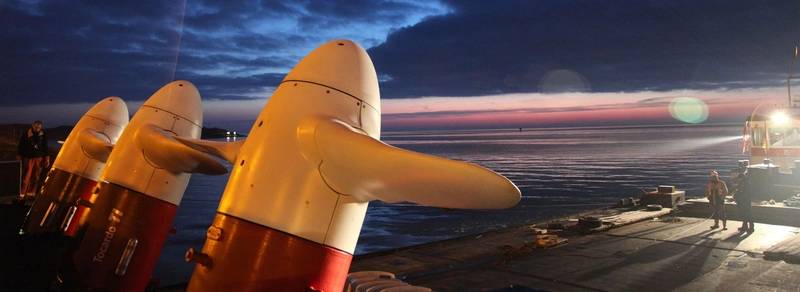Inyanga Marine Energy Group completed hydrodynamic testing of its Passive Pitch Unit for its patented HydroWing technology, which was recently awarded the largest tidal energy project in the UK in Allocation Round 6 of the UK government’s Contracts for Difference scheme and the company is now on course for deploying a 20MW tidal energy project at Morlais in Wales, in addition to other projects around the world.
The hydrodynamic testing was conducted at the Kelvin Hydrodynamics Laboratory at the University of Strathclyde in Scotland. “The tests on the passive pitch technology have behaved exactly as calculated, validating the ‘proof of concept’,” said George Dadd, Lead Turbine Engineer at HydroWing. “We will now continue the validation process with a full scale test rig.”
The test results reportedly confirm that the blade rotor on HydroWing’s tidal energy device can automatically regulate its own pitch using its self-adjusting system.
Richard Parkinson, CEO of Inyanga Marine Energy Group explains: “With this new pitch regulation system, the blade rotors can now scale to twice the swept area, while ensuring safety and efficiency, even in the harshest ocean conditions. This technology advance unlocks new possibilities for harnessing marine energy at a larger scale and paves the way for future innovations in predictable sustainable power generation. The passive pitch mechanism not only regulates the output of the device but protects the device from adverse conditions such as wave loadings, grid loss and storm surges. Passive pitch has major benefits over active pitch in terms of reliability, cost and load damping, while also achieving increased energy yield.”
The project has been supported by the IDCORE Program through which HydroWing have engaged two engineers as part of their EngD thesis.
George Dadd, HydroWing Lead Turbine Engineer, at hydrodynamic testing lab. Image courtesy Inyanga Marine Energy Group

